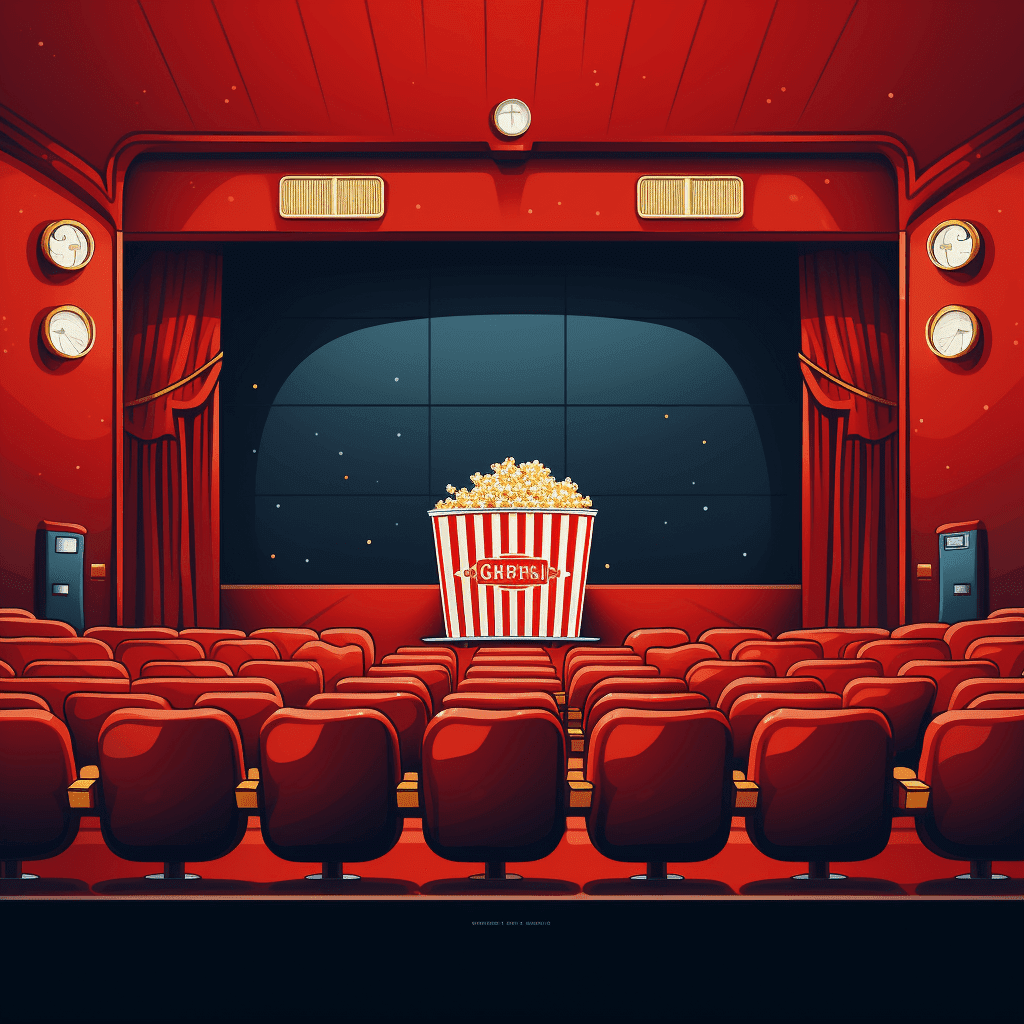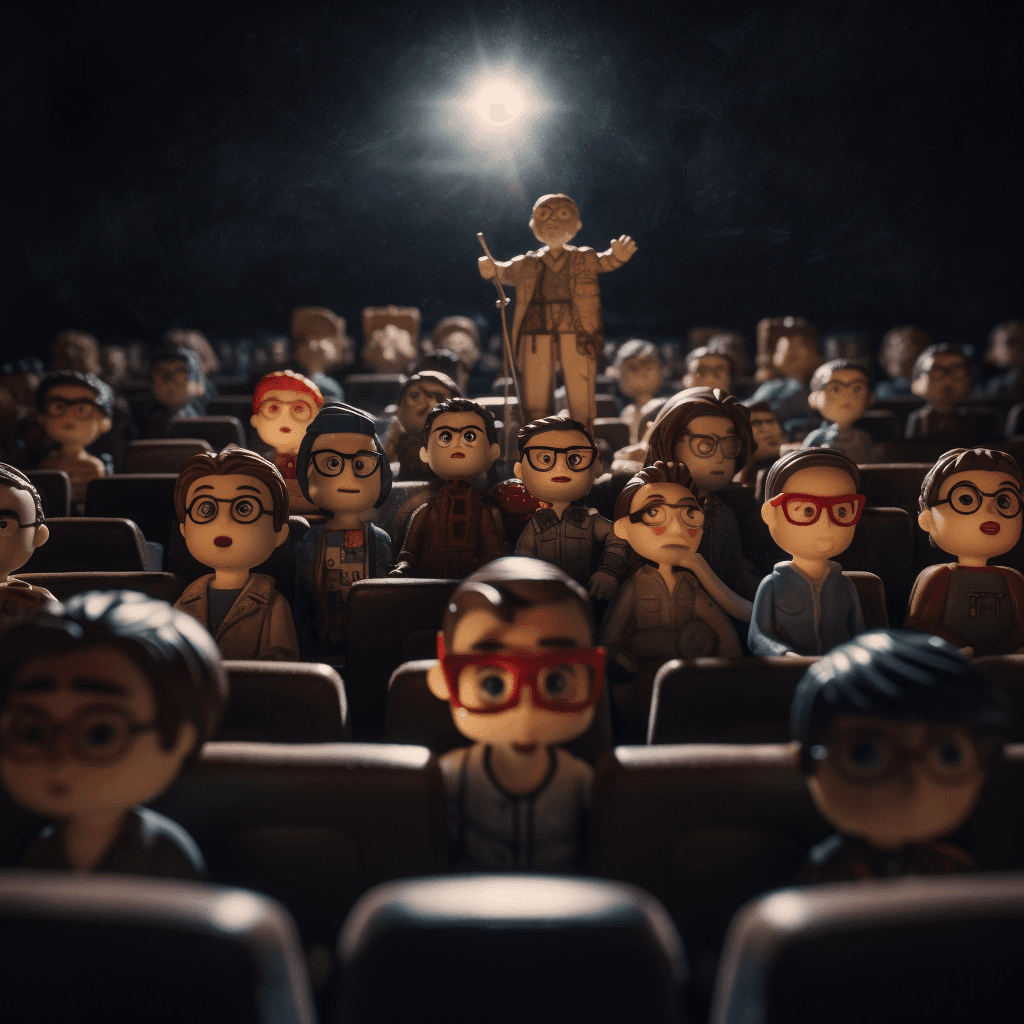What's After the Blog?
Genres • Culture
Exploring the World of Animated Films: Beyond Just Cartoons
Dive into the diverse and evolving world of animated films, exploring their impact on storytelling, culture, and adult entertainment in our latest blog post.
February 20, 2024

Movies mentioned in this article
Exploring the World of Animated Films: Beyond Just Cartoons
Introduction
Animated films have evolved significantly since their inception, transforming from simple entertainment into a sophisticated art form. The journey of animation in cinema began with short, silent films in the early 1900s and has progressed to feature-length masterpieces that captivate audiences of all ages. This evolution challenges the common misconception that animated films are merely cartoons meant for children. Contemporary animated movies offer complex narratives, rich visuals, and thematic depth that appeal to a wider audience. Films like Up and WALL-E by Pixar are prime examples, showcasing storytelling that resonates with both adults and children. They blend humor, emotion, and thought-provoking themes, breaking the stereotype and proving that animation can be a powerful medium for all.
The transformation of animated films is not just in their storytelling but also in their visual artistry. Early animations were hand-drawn, frame by frame, requiring immense labor and artistic skill. The advent of computer-generated imagery (CGI) revolutionized the field, allowing for more intricate and realistic visuals. This shift is evident in the progression from the hand-drawn classics of Disney, like Snow White and the Seven Dwarfs, to the CGI wonders of movies like Frozen. The evolution of animation reflects a broader trend in cinema – the embracing of technological advancements to enhance storytelling and create immersive experiences for the audience.
The Art and Science of Animation
Animation is a unique blend of art and science, involving various techniques and methods to bring static images to life. Traditional hand-drawn animation, also known as cel animation, was the foundation of this art form. Each frame was painstakingly drawn by hand, a process exemplified in classics like The Lion King and Beauty and the Beast. This method, while labor-intensive, allowed for a high degree of artistic expression, giving these films a distinctive and timeless quality.
The advent of stop-motion animation brought a new dimension to the field. This technique, involving the physical manipulation of objects frame by frame, creates a sense of realism and physicality that is hard to replicate in other forms of animation. Films like The Nightmare Before Christmas and Coraline are celebrated for their unique aesthetic and meticulous craftsmanship, showcasing the endless possibilities of stop-motion.
However, it is the introduction of CGI that has most dramatically transformed the world of animation. CGI allows for greater flexibility and realism, creating worlds and characters that were previously impossible to depict. The release of Toy Story by Pixar marked a significant milestone, being the first feature-length film made entirely with CGI. The technological advancements in movies like Spirited Away and Avatar demonstrate the vast potential of CGI in animation, allowing filmmakers to push the boundaries of creativity and storytelling.
In summary, the art and science of animation are continually evolving, driven by technological advancements and creative innovation. This evolution has expanded the scope of animated films, enabling them to become a medium that offers rich, immersive experiences for a diverse audience.
Animated Films in Cultural Representation
The world of animated films offers a unique canvas for cultural representation and storytelling, enabling filmmakers to explore and share diverse narratives and perspectives. Animation transcends the limitations of live-action films, offering a broader scope for depicting various cultures, traditions, and stories. For instance, Studio Ghibli’s Spirited Away beautifully encapsulates Japanese folklore and Shinto beliefs, while Disney’s Moana portrays Polynesian culture and mythology with vivid detail and respect. These films do more than entertain; they educate and connect audiences to different cultures and viewpoints.
“How do animated films impact cultural perceptions and societal norms?” This question highlights the significant role animation plays in influencing and reflecting societal values. Animated films often tackle complex themes such as identity, diversity, and social justice, making these concepts accessible to a broad audience. Films like Zootopia and Coco address issues of prejudice, racism, and the importance of heritage, respectively, facilitating conversations around these topics in a manner that is engaging and thought-provoking. Through their unique storytelling methods, animated films have the power to shape viewers’ understanding of the world, promoting empathy, awareness, and cultural appreciation.
The Global Landscape of Animation
Animation is a global phenomenon, with various countries and cultures contributing their unique styles and stories to the art form. Hollywood’s influence in animation is significant, with studios like Disney, Pixar, and DreamWorks setting high standards in terms of quality and innovation. However, the world of animation extends far beyond Hollywood. Japan’s anime industry, for instance, is a powerhouse of creativity and storytelling, producing acclaimed works like Your Name and Akira. Anime’s distinctive style, intricate plots, and deep character development have garnered a global following, influencing other animation styles and storytelling techniques.
The global landscape of animation also includes contributions from other countries, each bringing their unique cultural touch to the art form. French animations like Persepolis and The Triplets of Belleville are known for their artistic flair and unconventional narratives. Similarly, South Korean animations such as The King of Pigs offer gritty, thought-provoking stories that challenge conventional norms.
Highlighting key international animated films and their global influence, it’s evident that animation is not just a medium of entertainment but a form of art that transcends language and cultural barriers. It allows storytellers from different parts of the world to share their stories, contributing to a rich, diverse tapestry of global cinema. Animated films provide a window into different cultures, traditions, and experiences, enriching viewers’ understanding and appreciation of the world.
Storytelling Through Animation
Animation offers a unique medium for storytelling, where the only limit is the creator’s imagination. This freedom allows for the exploration of complex themes and narratives that might be challenging to portray in live-action films. Animated movies like Inside Out and Coco are prime examples of how animation can delve into intricate emotional and cultural landscapes. Inside Out, with its personification of emotions, provides a deep and insightful look into the human psyche, making abstract concepts tangible and relatable. Coco, on the other hand, explores themes of family, memory, and cultural heritage, bringing to life the rich traditions of the Mexican holiday, Día de Muertos.
The narrative depth in animated films is not confined to serious themes alone. Animation is equally adept at creating whimsical, fantastical worlds that captivate the audience’s imagination. Films like Fantasia and The Little Prince transport viewers to magical realms, showcasing the boundless possibilities of storytelling through animation. These films blend imaginative storytelling with stunning visuals, creating an immersive experience that is both entertaining and emotionally resonant.
Animation in Adult Entertainment
Contrary to the common perception that animation is primarily for children, there is a significant segment of animated films and series targeted towards adult audiences. These works often tackle mature themes, including politics, philosophy, and psychology, with a sophistication that appeals to a more mature viewership. “Are there animated films specifically made for adults?” Yes, and these films often offer a stark contrast to the family-friendly fare typically associated with animation. Films like Persepolis and Waltz with Bashir are poignant examples, exploring themes of war, identity, and personal struggles with a depth and honesty that resonate with adult audiences.
The rise of adult animation is also evident in television, with series like BoJack Horseman and Rick and Morty gaining widespread acclaim. These shows, known for their dark humor, satirical tone, and exploration of existential themes, have expanded the scope of animation in entertainment. They challenge the traditional boundaries of the genre, demonstrating that animation is a versatile medium capable of expressing a wide range of human experiences.
In conclusion, animation in adult entertainment is a growing and evolving field, offering new perspectives and storytelling approaches that enrich the genre. It stands as a testament to the versatility of animation as a medium, capable of engaging audiences across a spectrum of ages and preferences.
The Future of Animated Films
As we look towards the future, the animated film industry continues to evolve, embracing new technologies and storytelling techniques. The integration of virtual reality (VR) and artificial intelligence (AI) in animation is set to revolutionize the way we experience animated films. VR offers an immersive experience, placing the audience directly into the animated world, while AI can streamline the animation process, potentially leading to more intricate and detailed visuals. These advancements hint at a future where animated films are not just watched but experienced in a more interactive and engaging way.
Predicting trends in animation, it’s evident that the industry will continue to push the boundaries of what’s possible. The rise of streaming platforms has already expanded the reach and accessibility of animated films, allowing for more experimental and diverse content. Films like Klaus and The Mitchells vs. The Machines, which found success on streaming platforms, showcase the potential for innovative storytelling and creative freedom outside traditional studio systems. As technology advances, we can expect animated films to become even more visually stunning and narratively complex, appealing to a wider range of audiences and tastes.
Conclusion
The world of animated films is a rich and diverse realm that goes far beyond the traditional concept of cartoons. From its early beginnings to the current era of digital innovation, animation has continually evolved, offering new ways to tell stories and explore complex themes. Animated films have the unique ability to transcend cultural and linguistic barriers, connecting with audiences globally through their universal language of storytelling and visual artistry.
As we’ve explored the various facets of animation, from cultural representation to adult-oriented content, it’s clear that animation is a dynamic and versatile medium. It’s a form of art that appeals to all ages, constantly adapting and evolving to reflect the changing world around us. Animated films will undoubtedly continue to surprise and delight us, pushing the boundaries of cinema and storytelling in exciting and unexpected ways.
For more insights into the fascinating world of movies, including animated films, visit What’s After the Movie (ATM), your comprehensive movie database. Stay tuned to our blog for more in-depth discussions on the art and impact of cinema.
Continue reading

What's After the Movie?
Not sure whether to stay after the credits? Find out!
Check out our other apps:
Actors
Companies
Latest Movies
© 2025 What's After the Movie. All rights reserved.





























